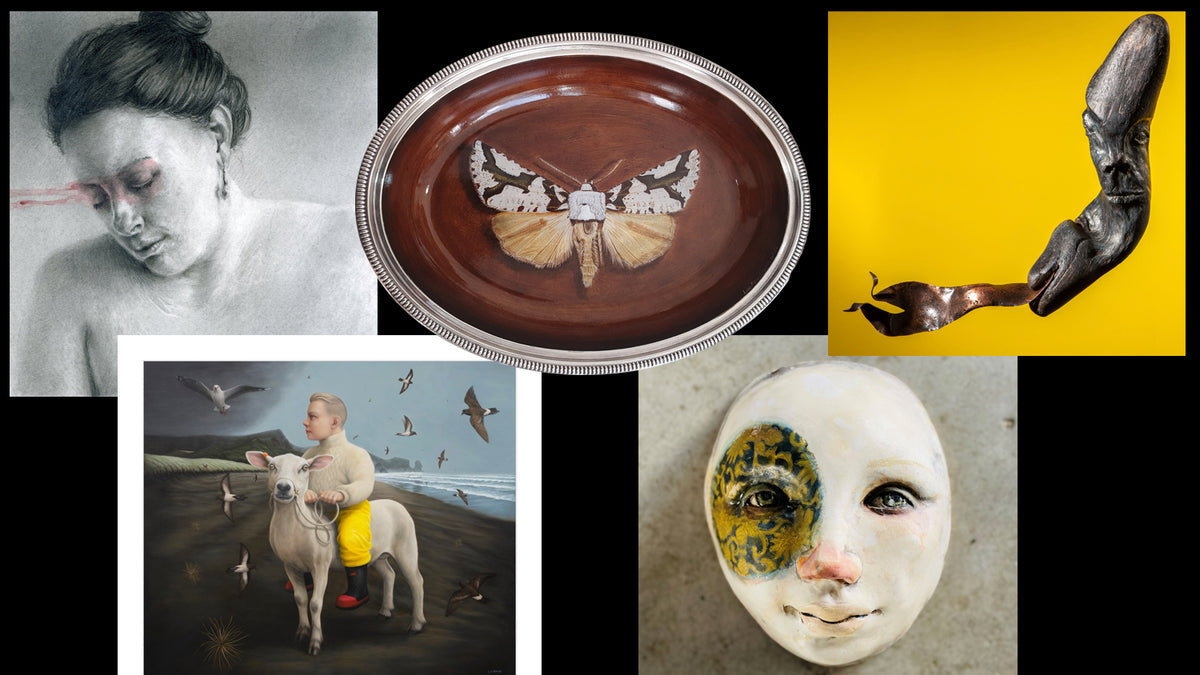Hayley Hamilton “I wanted to create work that had very obvious layers and elements, some peaking through from what lay beneath. A juxtaposition of images, people, animals, colours and textures that have the qualities of collage. Disjointed elements that ultimately blend together to create a whole new piece.
Such as it is to be human. Our layers stacking upon us through our life experience, our loves, disappointments, fears, and dreams. We are constantly changing, evolving but we never shed our previous layers. We are all multifarious.”
Liam Barr The exploration of people and their peculiarities lies at the essence of Barr’s work and he continues to define this experience expressed through meticulous attention to form and structure within the development of his paintings. Marked variations in subject matter are explored between series from his early magic surrealist and tiki inspired works through to historical narrative themed works. More recent series reflect a subtle surreal/realism crossover and contemporary image set. Images draw reference from fiction to subjective fact, weaving stories punctuated with symbolism, iconography, humour and pathos.
Simon van der Sluijs “The theme for my contribution to Multifarious is ‘In the absence of you’ which is the first line of a small poem I wrote”
in the absence of you
I lie down and
remember
that once
you were
here
Lee-Ann Dixon “Drawing from the past, I look to evoke memories of my childhood and familiar ideas of domesticity in the 1970s. I spent my time wandering the Orchards, an investigation of life in rural Marlborough. I was fascinated by the animals and the plant life, how they grow old and pass on but leave a part of themselves to the earth, a skull to gather moss or seeds to bring new life.
My late mother’s China cabinet was filled with treasures, and by recycling similar discarded treasures, I can breathe new life into these once loved objects. I work with oil, mostly on silver trays, painting still life to capture the decay and the darkness, finding beauty in the imperfections.”
Demarnia Lloyd-Harris “Growing up in rural North Canterbury sheltered from mechanised cities and industrially designed lives gave me an eye for finding character in nature. Without television and plastic toys my childhood imagination was directed to making stories and structures wherever I was, with whatever was around me. Being part of a creative, practical family built confidence in making, learning, and figuring out how things worked.”
Sodden earth clenched tightly in my hand became my lance and the cawing of a crow the eulogy for my beloved lost acorn army. (Acornicupia, H. St Andrew, 1975)
“Making things has been a part of my world since I was that child making heads for matchstick dolls before tucking them into matchbox beds with tiny sheets, frustrated at my 4 year old fingers that couldn’t shape a wee ball of bee’s wax into a convincing face, and for the rest of my life I have continued to draw, paint, learn, make and collect things.”

